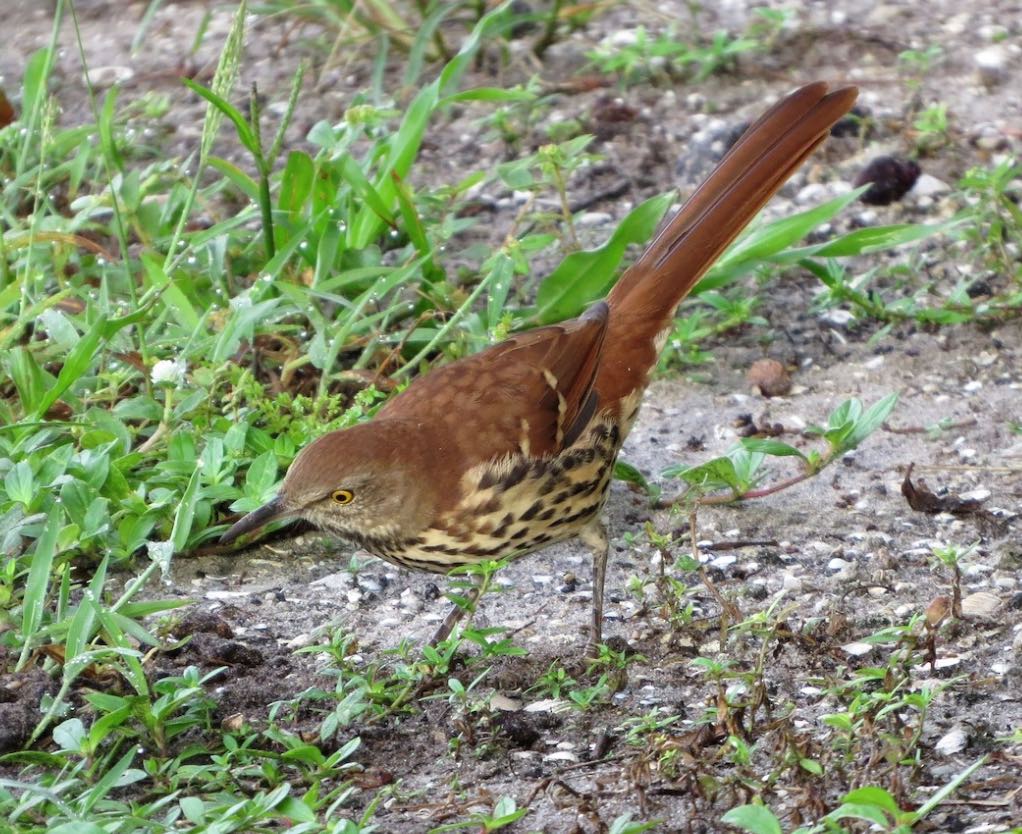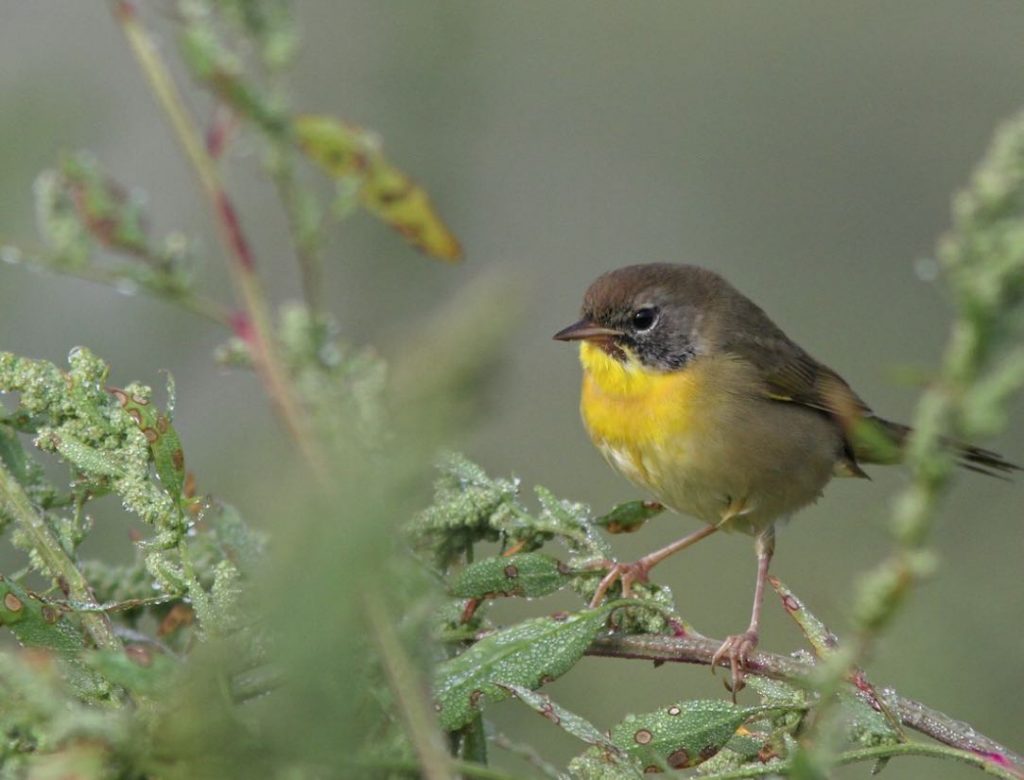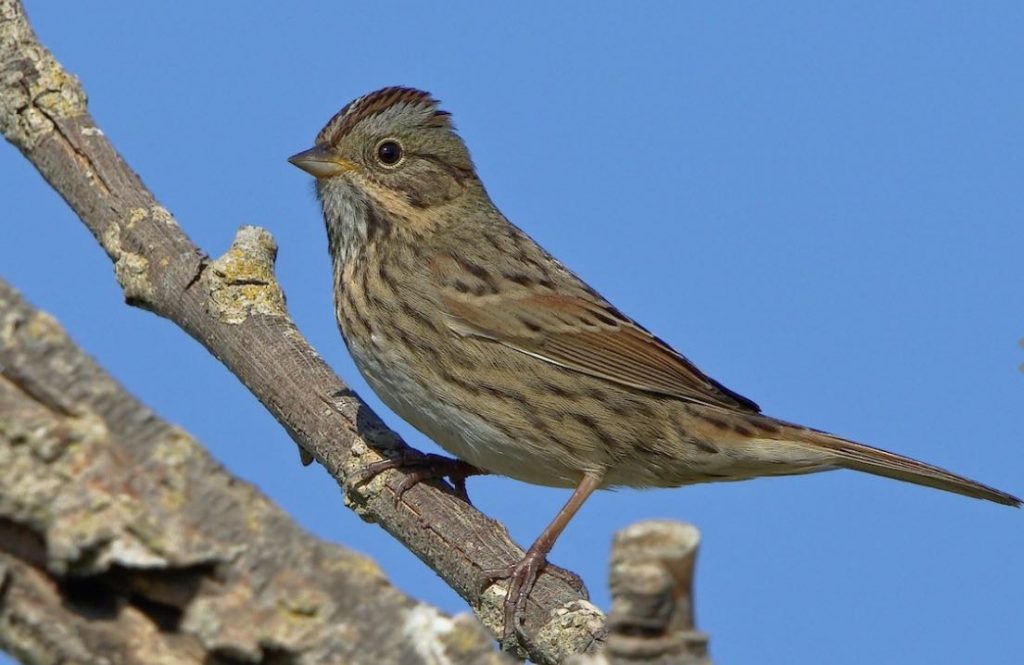Continental Summary
Moderate movements were the norm in many areas of the West this period and featured Say’s Phoebe, American Pipit, Ruby-crowned Kinglet, Townsend’s Warbler, Fox Sparrow, and Lincoln’s Sparrow, while moderate to heavy flights featuring Sharp-shinned Hawk, Merlin, Ruby-crowned Kinglet, Swainson’s Thrush, Gray-cheeked Thrush, Magnolia Warbler, Palm Warbler, and Yellow-rumped Warbler dominated the early and late days of the period in the East. Hurricane Irma brought a nasty dose of devastation to portions of the Southeast, while carrying a large array of storm-borne vagrants.
Curious what birds will move next? Check out our forecast.
Need a review of our definitions for regions, species on the move, and migration amounts? Please visit this link.
Quick Links to Regions
Upper Midwest and Northeast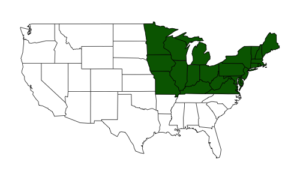 |
Gulf Coast and Southeast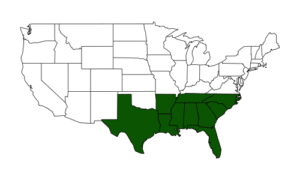 |
Great Plains |
West |
Upper Midwest and Northeast
Moderate to heavy flights kicked off the period, gradually decreasing to more coastal distributions by the end of the weekend. As Irma moved into the southern reaches of the region by Monday night, moderate flights continued to its north while primarily light flights occurred in closer proximity to the storm’s remnants. Note that numerous storm-displaced birds appeared in the southern reaches of the region (see this for a map). Moderate flights continued on Tuesday and Wednesday in many areas west of the Appalachians. But it was on Thursday night that moderate and locally heavy flights returned to more eastern portions of the region. Specifically, birds were aloft from the Ohio River Valley east and north into Maine, with lesser intensities close to the immediate coast.
Top Movers
Increasing
| Species | Increase from Last Week | % of Checklists Reporting |
|---|---|---|
| Swainson's Thrush | 298% | 11.8 |
| Palm Warbler | 769% | 7.6 |
| Blackpoll Warbler | 280% | 9 |
| Northern Parula | 201% | 9.2 |
| Magnolia Warbler | 93% | 18.3 |
| Black-throated Green Warbler | 131% | 11.8 |
| Bay-breasted Warbler | 173% | 7.3 |
| Northern Flicker | 52% | 31.1 |
| Cape May Warbler | 150% | 6.4 |
| Blue Jay | 34% | 63.2 |
| Gray-cheeked Thrush | 759% | 2.2 |
| Red-bellied Woodpecker | 40% | 32.6 |
| Lincoln's Sparrow | 969% | 2 |
| Philadelphia Vireo | 200% | 3.8 |
| Common Yellowthroat | 52% | 25 |
| Yellow-rumped Warbler | 141% | 4.6 |
| Tennessee Warbler | 79% | 10.3 |
| Black-throated Blue Warbler | 139% | 4.8 |
| Nashville Warbler | 84% | 7 |
| Eastern Phoebe | 36% | 21.4 |
| Scarlet Tanager | 92% | 5.7 |
| Sharp-shinned Hawk | 148% | 3.3 |
| Merlin | 101% | 4.2 |
| White-throated Sparrow | 150% | 2.3 |
| Ruby-crowned Kinglet | 455% | 1.6 |
Decreasing
| Species | Decrease from Last Week | % of Checklists Reporting |
|---|---|---|
| Barn Swallow | -80% | 4.6 |
| Baltimore Oriole | -81% | 1.5 |
| Least Sandpiper | -69% | 3.2 |
| Semipalmated Sandpiper | -62% | 3.8 |
| Tree Swallow | -56% | 6 |
| Eastern Kingbird | -73% | 2 |
| Lesser Yellowlegs | -53% | 4.4 |
| Bank Swallow | -96% | 0.1 |
| Semipalmated Plover | -52% | 4.6 |
| Stilt Sandpiper | -74% | 0.8 |
| Purple Martin | -82% | 0.5 |
| Pectoral Sandpiper | -59% | 2.1 |
| Spotted Sandpiper | -55% | 3.2 |
| Great Crested Flycatcher | -51% | 3.3 |
| Blue-gray Gnatcatcher | -42% | 6 |
| Baird's Sandpiper | -80% | 0.4 |
| Solitary Sandpiper | -51% | 2.3 |
| Short-billed Dowitcher | -69% | 0.9 |
| Buff-breasted Sandpiper | -92% | 0.1 |
| Cliff Swallow | -88% | 0.2 |
| Killdeer | -27% | 12.1 |
| Green Heron | -30% | 6.9 |
| Osprey | -24% | 10.8 |
| Northern Rough-winged Swallow | -57% | 1.4 |
| Olive-sided Flycatcher | -61% | 0.8 |
Gulf Coast and Southeast
Light to moderate flights occurred in many areas of the region away from Florida on Friday and Saturday nights. Irma’s arrival on Sunday and continued battering through Monday as it moved northwest shut down movements in its path. Moderate movements returned with its dissociation, with many areas of the region experiencing scattered moderate flights. The end of the period saw most of these flights occurring east of the Mississippi River Valley, with some being more intense in coastal areas.
Top Movers
Increasing
| Species | Increase from Last Week | % of Checklists Reporting |
|---|---|---|
| Magnolia Warbler | 879% | 6.4 |
| Common Yellowthroat | 168% | 8.2 |
| American Redstart | 70% | 12.4 |
| Tennessee Warbler | 427% | 3.1 |
| Chestnut-sided Warbler | 144% | 4.8 |
| Baltimore Oriole | 139% | 5.5 |
| Brown Thrasher | 51% | 11.5 |
| Swainson's Thrush | 1062% | 1.7 |
| Gray Catbird | 61% | 8.4 |
| Scarlet Tanager | 203% | 3 |
| American Crow | 24% | 37.2 |
| Eastern Phoebe | 42% | 13.1 |
| Wilson's Warbler | 140% | 3.5 |
| Chimney Swift | 29% | 16.1 |
| Nashville Warbler | 418% | 1.4 |
| Blue Jay | 20% | 49 |
| Merlin | 848% | 0.9 |
| Black-throated Green Warbler | 116% | 2.8 |
| White-eyed Vireo | 28% | 18.3 |
| Pied-billed Grebe | 61% | 5.3 |
| Canada Goose | 32% | 10.7 |
| Mallard | 39% | 8.9 |
| Ruby-throated Hummingbird | 17% | 28.9 |
Decreasing
| Species | Decrease from Last Week | % of Checklists Reporting |
|---|---|---|
| Spotted Sandpiper | -46% | 4.4 |
| Purple Martin | -68% | 1.4 |
| Prothonotary Warbler | -88% | 0.3 |
| Green Heron | -45% | 6.1 |
| Short-billed Dowitcher | -71% | 1.1 |
| Least Tern | -83% | 0.5 |
| Mississippi Kite | -77% | 0.8 |
| Barn Swallow | -30% | 15.2 |
| Eastern Kingbird | -39% | 4.6 |
| Mourning Dove | -19% | 40.4 |
| Gray Kingbird | -84% | 0.2 |
| Blue Grosbeak | -41% | 3.6 |
| Little Blue Heron | -27% | 9.4 |
| White Ibis | -25% | 9.5 |
| Semipalmated Plover | -33% | 4 |
| Bell's Vireo | -83% | 0.2 |
| Magnificent Frigatebird | -104% | -0.1 |
| Solitary Sandpiper | -39% | 1.9 |
| Black-bellied Plover | -34% | 2.7 |
Great Plains
The region was mostly quiet on Friday and Saturday nights. Sunday saw the first pulses of moderate flights in the northern Plains, with light to moderate flights following suite in the days that followed in the central and southern Plains. Never was migration widespread across the region during the period, with more marginal conditions keeping the extent of flights more local. Locally heavy flights ended the period, though with similarly local extents in the northern and central Plains.
Top Movers
Increasing
| Species | Increase from Last Week | % of Checklists Reporting |
|---|---|---|
| Ruby-crowned Kinglet | 921% | 6.9 |
| Orange-crowned Warbler | 362% | 7.5 |
| Yellow-rumped Warbler | 432% | 5.2 |
| Lincoln's Sparrow | 293% | 5.8 |
| White-crowned Sparrow | -9867% | 3.5 |
| Red-breasted Nuthatch | 145% | 9.2 |
| Northern Flicker | 83% | 25.9 |
| Clay-colored Sparrow | 167% | 7.4 |
| White-throated Sparrow | 412% | 3.4 |
| Pine Siskin | 169% | 6 |
| Franklin's Gull | 74% | 11.5 |
| Blue Jay | 34% | 49.4 |
| Sharp-shinned Hawk | 421% | 2.9 |
| Vesper Sparrow | 227% | 4 |
| American Robin | 20% | 38.5 |
| Savannah Sparrow | 189% | 3.3 |
| Osprey | 115% | 4.5 |
| Belted Kingfisher | 41% | 12.5 |
| Gray Catbird | 37% | 15.2 |
| Eastern Bluebird | 35% | 17 |
| Swainson's Thrush | 91% | 4.9 |
| Horned Lark | 94% | 5.6 |
| Palm Warbler | 372% | 1.4 |
| Cassin's Kingbird | 330% | 1.7 |
Decreasing
| Species | Decrease from Last Week | % of Checklists Reporting |
|---|---|---|
| Baltimore Oriole | -96% | 0.6 |
| Great Crested Flycatcher | -74% | 2.4 |
| Eastern Kingbird | -69% | 5 |
| Mississippi Kite | -71% | 3.4 |
| Little Blue Heron | -79% | 0.9 |
| Red-eyed Vireo | -57% | 5.5 |
| Black-and-white Warbler | -76% | 1 |
| Chestnut-sided Warbler | -92% | 0.2 |
| Bell's Vireo | -76% | 0.9 |
| Cliff Swallow | -72% | 1.4 |
| Bald Eagle | -60% | 2.5 |
| Spotted Sandpiper | -65% | 1.8 |
| Dickcissel | -77% | 0.9 |
| American Redstart | -55% | 3.2 |
| Eastern Wood-Pewee | -47% | 6.2 |
| Olive-sided Flycatcher | -56% | 2.4 |
| Barn Swallow | -36% | 20.7 |
| White-faced Ibis | -57% | 2 |
| American Goldfinch | -30% | 23.9 |
| Magnolia Warbler | -81% | 0.4 |
| Purple Martin | -90% | 0.2 |
| Ruby-throated Hummingbird | -34% | 10.8 |
| Least Flycatcher | -45% | 4.6 |
| Black-necked Stilt | -77% | 0.5 |
| Red-headed Woodpecker | -35% | 9.9 |
West
Light and moderate flights were the norm to begin the period. These flight increased in extent by Sunday and Monday nights, even intensifying locally in Utah and the Rockies. Tuesday and Wednesday saw these flights continue, especially in the southern Rockies and portions of the Desert Southwest. But other areas of the region were also active, albeit with lower intensity flights. By the end of the period, with precipitation becoming increasingly more widespread, migration extents became more restricted. However, intensities where migration did occur remained in the light to moderate ranges, particularly along the Pacific Coast and east along the Mexico border.
Top Movers
Increasing
| Species | Increase from Last Week | % of Checklists Reporting |
|---|---|---|
| Lincoln's Sparrow | 226% | 6.1 |
| White-crowned Sparrow | 73% | 12.8 |
| Say's Phoebe | 72% | 7.5 |
| Black Phoebe | 34% | 24.2 |
| Orange-crowned Warbler | 48% | 12.9 |
| Yellow-rumped Warbler | 48% | 10.5 |
| Spotted Towhee | 35% | 17 |
| Red-shouldered Hawk | 61% | 6.4 |
| Turkey Vulture | 27% | 24.4 |
| American Pipit | 215% | 2.7 |
| Townsend's Warbler | 82% | 4.8 |
| Western Bluebird | 42% | 7.9 |
| Ruby-crowned Kinglet | 99% | 3.9 |
| Savannah Sparrow | 41% | 9 |
| Red-tailed Hawk | 19% | 19.6 |
| Northern Flicker | 16% | 21.7 |
| American Coot | 25% | 12.9 |
| Fox Sparrow | 129% | 1.1 |
| Northern Mockingbird | 28% | 8.8 |
| Vaux's Swift | 41% | 3.4 |
Decreasing
Western Kingbird,-58%,2.6
Black-headed Grosbeak,-48%,3.1
Least Sandpiper,-35%,6.1
Western Sandpiper,-35%,5.3
Lesser Yellowlegs,-45%,2.2
Nashville Warbler,-50%,1.4
Purple Martin,-70%,0.4
Common Nighthawk,-70%,0.4
Rufous Hummingbird,-37%,3.4
Northern Rough-winged Swallow,-47%,1.4
Cliff Swallow,-49%,1.5
Barn Swallow,-19%,18.9
Black-chinned Hummingbird,-30%,4.6
Osprey,-22%,7.6
Baird’s Sandpiper,-38%,1.7
Caspian Tern,-26%,5.9
Spotted Sandpiper,-27%,4.9
Western Wood-Pewee,-26%,5.9
Ash-throated Flycatcher,-60%,0.4
Hooded Oriole,-38%,1.5
Pigeon Guillemot,-42%,1.1
Short-billed Dowitcher,-38%,1.1
Long-billed Dowitcher,-32%,2
/table]
–––––––––––––––––––––––––––––––––––
Farnsworth and Van Doren


